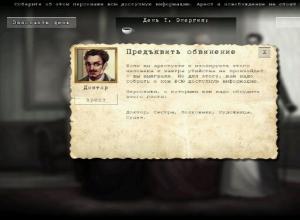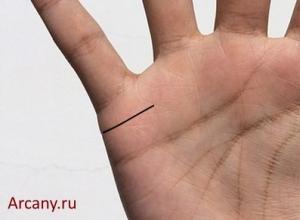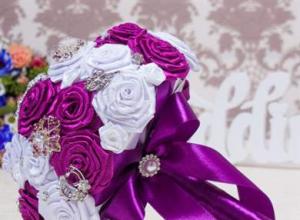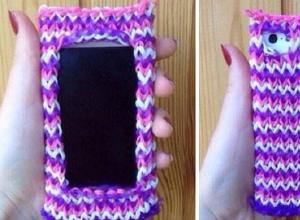Cutting patterns for a size 52 skirt made of burda. Pencil skirt: pattern and sewing workshops
A classic pencil skirt is a universal model of women's clothing that will look irresistible in any design and will be very appropriate in any situation - from an informal party to a business event. An elegant high-waisted pencil skirt will allow every woman to look irresistible in any setting.
However, it should be noted that the same model made from different fabrics will look completely different. Based on this, Several general patterns can be deduced:
- For a business meeting or going out to the office, tweed, tartan, gabardine, loden, jacquard, boucle, etc. are perfect.
- For everyday outings, skirts made of corduroy, denim, knitwear, crepe de chine, linen, and georgette will be good.
- Evening clothing style is well emphasized by velor, velvet, suede, lace fabric, fur, satin, taffeta.
Building the basis of the pattern
Before sewing a pencil skirt with your own hands, you need to build a base - a straight two-seam skirt.
Even a novice craftswoman can do this. Below is a step-by-step master class on creating a pattern.
You need to start working by creating a basic pattern for a straight skirt. To do this, you need to take the following measurements:

To create a pattern with your own hands you will need a millimeter.
- First you need to draw a basic line. To do this, a conditional point T is placed on the paper. A line is drawn from it strictly perpendicularly downwards.
- Next, the bottom edge is determined and drawn. To do this, on a line drawn from point T, a segment equal to the length of the product from the back waist (DS) is laid off. At the other end of the segment we place the letter H.
- From point H we draw a line horizontally to the right.
- Draw the line of the hips. To do this, a segment is laid down from point T. Its length is calculated using the formula DST /2–1 cm. Having determined this point, we designate it with the letter B. As a rule, the distance from the waist to the hips can vary in the range from 10 to 20 cm.
Construction of the front and rear canvas
To build the front canvas, you need to find the middle line.
- To do this, draw a segment along the hip line from point B. The length of this segment should be equal to the half-circumference of the hips and the seam allowance. At the end of the segment we place point B1.
- From point B1 a straight line is drawn straight down.
- Where the new line intersects with the bottom line, mark point H1. The next segment is laid upward from this point. Its length is equal to the DP figure. Point T1 is placed at this location.
- Next, the line of side cuts is constructed. To do this, a segment is drawn from point B. Its length is equal to half the size of the FOB + seam allowance. It is necessary to subtract 1 cm from this value. The resulting point on the segment will be called B2.
- From point B 2 downwards we draw a straight line until it intersects with the lower straight line. This intersection point will be called H2.
- From point H2 we draw a line vertically upward and lay a segment on it. Its length is equal to the number DU. At this end of the segment, point T2 is marked.
Next you need to outline the darts. A classic straight skirt has front, back and side darts. The total width of all open darts (∑B) implies the difference in the half-circumference of the hips and waist, taking into account the seam allowance.
- Side dart. Its area should be half the number (∑B). It is recommended to start sewing the dart 2 cm above the hip level.
- The back dart is calculated using the formula TT 1 = FOB ÷ 4–2 cm
- The front dart formula looks like T 1 T 2 = FOB ÷ 4–1 cm
- The front dart starts 7–8 cm above the hip line
The width of the back panel of the skirt along the bottom line is equal to the width of the product at the hips + 4 cm. The width of the front panel is equal to the width at the hips + 3 cm.
We got the basic straight skirt pattern. On its basis the pattern of a pencil skirt will be completed.
Constructing a pencil skirt pattern
 To build a pencil skirt model with your own hands, you will need to narrow the skirt fabric at the bottom and make a vent on the back fabric. This will provide more freedom of movement. The narrowing can range from 1 to 3 cm.
To build a pencil skirt model with your own hands, you will need to narrow the skirt fabric at the bottom and make a vent on the back fabric. This will provide more freedom of movement. The narrowing can range from 1 to 3 cm.
To create a vent on the pattern of a tapered skirt, you need to make an additional allowance of 8 cm. The back panel is cut from 2 halves, which will need to be sewn together using a longitudinal seam.
Constructing a High Waist Skirt
To improve the proportions of your figure, you can create a pattern for a high-waisted pencil skirt. Such a knee-length skirt will look very advantageous, highlight all the advantages of your figure and hide flaws.
To create your own high-waisted pattern the belt of the desired length is drawn. This is done using vertical lines drawn up from the points on the waist line. All new points obtained are connected and a new waist line is obtained. This will require slightly reducing the depth of the darts. You can sew darts by adding 5 mm along the top edge. The height of the side cut is also raised by 5 mm. As a result, you will get a skirt with a one-piece belt.





To do this we need three measurements.
For example, I use the standard size 48, and you take measurements from your figure or from the figure of the person for whom you are going to sew this skirt.
Skirt length Du - 68cm
Waist semicircle POT - 38cm
Semi-circle of hips POB - 52 cm
In addition to these measurements, you need to take into account allowances for a loose fit. Allowances are usually 1–2 cm along the hip line, and 0.5–1 cm along the waist line.
In the upper right corner we put point A. From it, down a vertical line we put the distance to the hip line - 18cm (for all sizes), we put point B and the length of the skirt is 68cm, we put point D.
Through these points to the left we draw horizontal lines and set aside 54 cm (the taken POB measurement plus 2 cm for a loose fit) and put points A1, B1 and D1, respectively, through which we draw a straight vertical line:
AA1 = BB1 = DD1 = 52 + 2 = 54cm.

Fig.2
From points A, B and D to the left we set aside the width of the back panel of the skirt, which is equal to half the POB measurement minus 1 cm and put points A2, B2 and D2, respectively, through which we draw a straight vertical line:
AA2 = BB2 = DD2 = 52: 2 – 1 =25cm.

Fig.3
Calculation of the depth of darts along the waist line:
The total size of the dart opening along the waist line is determined as the difference between the POB measurements with an allowance for a loose fit (52 + 2 = 54 cm) and the POT measurements with an allowance for a loose fit (38 + 1 = 39 cm), 54 - 39 = 15 cm.
Of these 15cm, half, i.e. 7.5 cm is the depth of the side darts, 3.7 cm to the left and to the right from point A2. Set aside and place points A3 and A4.

Fig.4

Fig.5
The opening size of the darts on the back panel of the skirt is equal to 1/3 of the total opening size of all darts minus 0.5 cm:
15: 3 – 0.5 = 4.5 cm i.e. 2.25 cm to the right and left from point B.
Set aside and place points B1 and B2.

Fig.6
From point B down vertically we set aside the length of the dart 14 - 15 cm (constant value), we get point B3 and connect points B1 and B 2 with point B 3.

Fig.7
Determine the location of the dart on the front panel of the skirt. From point A1 to the right we set aside a distance equal to 1/4 POT plus 1 cm and place point B4.
A1B4 = 38: 4 + 1 = 10.5 cm.

Fig.8
The size of the dart solution on the front panel of the skirt is equal to 1/6 of the total amount of all darts:
15: 6 = 2.5 cm i.e. 1.25 cm to the right and left from point B4. Set aside and place points B5 and B6.

Fig.9
Down from point B4 vertically we set aside the length of the front panel dart, it is equal to the size of the tuck opening (See previous calculation) multiplied by 4. (2.5 x 4 = 10 cm) and set point B7.
We connect points B5, B6 and B7.

Fig.10
From point B2 upward we set aside 3cm (constant value) and place point B3.
We connect points B3 and A3 with a smooth line, extending it upward by 1.5 cm and placing point A5. We do the same with points B3 and A4, not forgetting to extend it upward by 1.5 cm, and placing point A6.

Fig.11
The last step was to design the side lines of the front panel of the skirt A5B3D2 and the rear panel - A6B3D2.

Fig.12
To complete the design of the waist line, you need to connect points B6 and A5, as well as A6 and B1, with smooth lines.

Fig.13
All! The skirt base pattern is ready.
This is the basic drawing on the basis of which you can design any style from the whole variety of skirt styles.
I wish you all creative inspiration!
Download in one file | Turbobit | |
The rights to this article belong exclusively to the author. Full or partial use of the materials of this article in electronic publications on the Internet is possible only if the following conditions are met:
Information about the author must be preserved. In the title or at the end of the published reprint, the source must be indicated: www.site Internet resource "Sewing Crafts Master" with a direct, active, visible to the user, not blocked from indexing by search engines hyperlink to this article.
Republication of texts in newspapers, magazines or other replication outside the Internet is possible only with the written consent of the author.
The finished pencil skirt pattern is designed for girls and women of curvy shape with a hip circumference from 110 to 128 cm.
Pencil Skirt occupies a leading position among styles and types of clothing that fit perfectly into the wardrobe of overweight women.
This is an almost standard pencil skirt pattern, which is what makes it good, as it can be used as a basis for modeling.
Even if you are just starting to understand the basics of tailoring, this style will easily conquer you.
Thick knitwear is ideal for sewing - this is a friendly recommendation (tested from personal experience). You can also use other fabrics.
Waist circumference 86 92 98 104 cm.
Hip circumference 110 116 122 128 cm.
The pattern is given in actual size without seam allowances
How to prepare a pattern for cutting a skirt:
After receiving the file with the skirt pattern, print the first sheet with a square of 10 by 10 cm, check the scale, and if necessary, achieve full compliance with this size (10x10) using the printer settings. Now you can print all other sheets. Glue the pattern sheets together - this can be done using narrow tape or a glue stick, cut out the pieces to the size that suits you and the pattern is ready to work.
Before you start cutting the skirt, make sure that the parameters of the pattern match your girth. Also adjust the length of the skirt.
When cutting, make allowances slightly larger than usual in those places where adjustments are possible during fitting.
CUT DETAILS
- Skirt front panel 1 piece with fold
- Back panel of skirt 2 parts
- Additionally, you should cut a belt with a length of 92-98-104-110 (according to the size) and a width of 6 cm, plus seam allowances.
Once again I remind you of the need to give seam allowances, since the pattern is given without allowances. For stitched seams, 1.5 cm is enough; for hems, leave 4 cm as standard.
The skirt can be sewn either with or without lining.
The lining is cut according to the main patterns.
Sewing
After stitching, overcast all sections and iron or iron them in accordance with the style of the product.
- Sew darts on the front and back panels of the skirt, iron to the center line.
- Sew the middle section of the back panel of the skirt between the control marks. Leave an open area for a zipper - at the top, and for a small slit, allowing free walking - at the bottom of the middle seam of the skirt.
- Sew in the zipper.
- Finish the cut at the bottom of the middle seam of the skirt.
- Stitch the side seams.
- Process the top section of the skirt, having previously duplicated the skirt waistband with an adhesive gasket.
- Hem the bottom.
You should not encounter any special difficulties when sewing this skirt model. The style itself is simple, and must obey you.
Content
A fashionable skirt that fits tightly around the hips and has an elegant cutout at the back is a classic style that is popular among modern women. This is a basic wardrobe item that helps its owner look chic, feminine and confident. The product is easy to sew yourself if you know the basics of sewing and make the right pattern.
How to cut a pencil skirt
Sewing clothes that fit your unique shape and size may seem like a complicated process, but if you carefully cut the product, it will definitely work out. How to make a pencil skirt pattern? To do this, you need to have a couple of tools and a desire to please yourself with a new thing. After doing a few mathematical calculations, you will get a skirt template to suit your figure. When making a pattern, you should, first of all, start from the fabric from which you are going to sew the item.
Fabric for pencil skirt
The quality of the material depends on your desire. The question of how much fabric is needed for a pencil skirt worries every seamstress who is going to sew a new product for herself. The amount consumed depends on factors such as the style of the item, its length, width and hip volume of the future owner. When purchasing fabric, you should take into account the increase that will be used for seams, hems, decorative inserts or vents. There are rules, following which, even a novice seamstress will not go wrong with the amount of material for a pencil skirt pattern:
- If the hip volume is less than 145 cm, then the amount of fabric needed is calculated as follows: the desired length of the product is determined, and 20 cm is added to it for seams and other elements.
- If the hips are more than 145 cm, then the length of the skirt is multiplied by 2 and another 20 cm is added.
How to cut a pencil skirt - step by step instructions
Before you sew yourself a new thing, you need to create a pattern. Those who do needlework know how to cut a pencil skirt: to construct it, you need to take measurements and create a grid drawing of the base. Do it like this:
- To start, take three main measurements: the circumference around your waist, the distance from your waist to your hips, and the distance from your hips to your knee.
- Make a template for half of the skirt: take a large piece of paper, draw a rectangle with the long side towards the edge of the paper. The rectangle should correspond to the lengths of the measurements plus 12 cm for the waistband and hem. The figure should be as wide as the hip measurement plus 2cm for seam allowance.
- From the waist, measure the length of the product plus 6 cm for the belt. Mark this point on the long side of the rectangle. Carefully draw a curved line from the waist to the mark you just created. Then mark a curve from the knees to the hem 6 cm inward from the outer bottom edge of the rectangle. Mark this point.
- Cut out the template.
Pattern of a pencil skirt for beginners - step-by-step instructions
If you manage to cut out the product, then consider that success in sewing is almost guaranteed. All that remains is to take a few more steps. When you cut the fabric according to the pattern, do not forget to add two centimeters on all sides so that the item does not end up being tight, especially for material that does not stretch. So, to sew a pencil skirt with your own hands for beginners, step-by-step master classes have been developed. For example, here’s how to make a pattern for a straight model pencil skirt, which has a narrowed shape, a vent and a belt:
- Make a drawing, then transfer its outlines to paper.
- Lower the hip line 7-8 cm along the side seam, place point A4 on the back half and A5 on the front.
- From the existing points, draw a bevel to the bottom line, narrowing the future skirt.
- If the length of the product is about 50-60 cm, then bend 2 cm along the bottom line on each side, and from these new points draw a side seam to the existing points. It is worth noting that the angles must be 90 degrees, otherwise the bottom will “bounce”.
- Create a vent (up to 5 cm wide, 18 to 20 cm high) or mark the height of the cut by placing a mark in the middle of the back of the pattern.
- Add seam allowances and begin cutting on the fabric.

Modeling a pencil skirt
You can choose a different cut of a pencil skirt, the main thing here is not to ignore the individual characteristics of the figure, correctly calculate the parameters so that when sewing the product fits perfectly to the figure. The pencil skirt has a tight-fitting style, so you need to accurately measure the waist, the distance from the waist to the hips and from the hips to the knee, and position the zipper correctly. Modeling a pencil skirt is not a difficult task, but it requires exact numbers and a detailed description.
High waist pencil skirt
This item is a universal outfit that will suit both slender girls and those with curvy figures. A high-waisted pencil skirt can be short or slightly below the knees, and it can be made from any material, for example, suiting fabric or knitwear of any density. Before cutting out a high-waisted product, you should take into account the load on the fabric, because the loose texture will not last too long.
Knitted pencil skirt
Products made from this material have won the hearts of more than one girl and woman. The peculiarity of narrow knitted skirts is that, while hugging the figure, they can emphasize the folds of the body, so they are recommended for thin girls to wear, or you can use slimming underwear. The product shown in the photo has a number of advantages that make it a favorite in women’s wardrobes:
- It’s very easy to make a pencil skirt with your own hands, and it can be of any length, high-waisted or with a vent – it all depends only on your imagination.
- The product fits the hips, favorably emphasizing the smooth curves of the female silhouette.
- The length to maple or slightly below is universal, so the skirt can be combined with business and casual wear.
- Knitted skirts wear well, do not wrinkle, and are easy to care for.

Pencil skirt below the knee
The product, as in the photo, was just recently worn exclusively by business women, and today many people choose this style. A pencil skirt below the knee looks ideal on girls of small stature, because it helps to visually lengthen the figure and legs. A slit at the back or sides allows freedom of movement, while maintaining an attractive, tight-fitting shape that every lady can cut and sew herself.
Classic pencil skirt
This type of clothing should be in the wardrobe of every true lady. A classic pencil skirt goes well with many types of clothing; it favorably emphasizes the femininity and beauty of its owner’s figure. It is worth noting that if you know even a little about sewing, then patterning a pencil skirt is a piece of cake for you, because detailed master classes on the process of creating a new thing are in almost every issue of the fashion magazine Burda.
Pencil skirt with pockets
If, when making your own skirt pattern, you want to give it some flirtatiousness, then you should consider this model. The pencil skirt with pockets has a loose style, so it can even be considered youth clothing. Different pockets can give the finished product a completely different mood: slightly protruding pockets are liked by lovers of informal style, while welt pockets with exquisite embroidery at the top are preferred by luxurious and self-confident ladies.

Pencil skirt with front slit
The elegant slit on the skirt cannot help but attract attention. A product with such a nuance will look more seductive. So, a pencil skirt with a front slit is suitable for women of any age, but it is better to make it no more than 10-15 centimeters so that the lady does not look vulgar. There are a lot of photos that demonstrate the beautiful appearance of the owners of such skirts.
Video: How to make a pencil skirt pattern
Found an error in the text? Select it, press Ctrl + Enter and we will fix everything!If you're still looking for New Year's outfit ideas, it's time to make a choice! We will not offer you complex and expensive options for intricate styles, because to be a real star of any party, it is enough to sew one of these five luxurious skirts. The main secret of these models is a laconic cut, high-quality fabrics and a minimum of details. Take a closer look at our fab five - we've rounded up five stunning skirts to suit every taste - from a classic pencil skirt to an airy circle skirt. And with each of them you can create amazing images! Now comes the best part - all five models are designed for plus sizes.
Our hit parade contains skirt models that you can sew yourself, and it will take you very little time. If you have even a little experience in sewing, you will spend a maximum of two days, and some models can be sewn in two hours!
Advice! The presented skirt models are also suitable for standard body sizes.
Large size circle skirt pattern
To create a circle skirt pattern, you need to take only 2 measurements:
- Waist 90 cm
- Product length according to measurement 65 cm
Rice. 1. Pattern of a circle skirt
Draw a circle of a given radius using a simple pencil and a flexible measuring tape as shown in Fig. 1.
IMPORTANT! Check the length of the first semicircle: A1A2 = 1/2 waist circumference. Since the cut is made on the bias, after cutting, pull the waist cut by 2 cm (no additional increase in freedom of fit is required).
Belt: Belt length = Waist circumference + 5 cm, belt width 8 cm (4 cm when finished). And
Rice. 2. Cutting details of the circle skirt
Pleated skirt pattern
To create a pleated skirt pattern, you will need to take 2 measurements:
- Waist 90 cm
- Product length according to measurement 65 cm
Let's calculate the width of the canvas based on the number and depth of folds. The model has 5 bow (counter) folds on the front panel and 5 on the back panel. The depth of each fold is 8 cm (4 cm when finished). Thus, the required increase in folds for the front panel of the skirt is: 5 x 2 x 8 = 80 cm.
Divide the increase in folds for the back panel in half, since the back panel of the skirt consists of 2 halves; the zipper is sewn down the center. The skirt pattern is shown in Fig. 2. Place the folds at the same distance from each other, calculating their location in this way: (Waist circumference + 2 cm) divided by 20 (1/20 From) and (Waist circumference + 2), divided by 10 (1/10 From) . Cut out 1 child. front panel, 2 pieces of back panel, and a belt (AB = Waist circumference + 2 cm).
Rice. 2. Pattern of a pleated skirt
Lace pencil skirt pattern
If you have a ready-made straight skirt base pattern, use it for modeling, or you can create your own base pattern using these instructions:
For large sizes, it is necessary to make adjustments to the base pattern of the skirt (adjustments need to be made only if you have large buttocks - Fig. 3).
Rice. 3. Adjustment of the back half of the skirt
Align the front half of the skirt along the side seam with the back half of the skirt (Fig. 4).
Rice. 4. Adjustment of the front half of the skirt
To create a pencil silhouette, taper the side seams. To do this, step back 10 cm from the hip line and draw a new side line, narrowing the hem width by 1.5 cm. Additional fitting can be achieved by using a subgluteal dart.
To further emphasize the convexity of the buttocks, a pencil skirt is sometimes additionally made with a subgluteal dart in the middle seam of the back half. Firstly, she perfectly draws the silhouette, giving it a more distinctly feminine shape. And secondly, such a dart will not at all affect the volume of the skirt in the hip area. If the product has a slot, you can model it and be sure that it will not diverge.
Set aside 5-8 cm from the hip line (depending on the shape of the buttocks) and draw a dart 1-2 cm deep to the bottom line of the back half of the skirt.
Rice. 5. Modeling the subgluteal dart
Pencil skirt pattern with raised seams
The skirt is made of fabric of two colors and textures - black jersey and fabric with rose gold sequins; a belt is sewn at the waist. This skirt style is modeled based on the previous model.
On the back panel of the skirt along the hip line, set aside 8 cm from the side line to the left and draw a vertical line of the relief seam through the resulting point. Move the waist dart along the relief line, draw smooth relief lines to the waist line, deepening the waist dart by 1-2 cm. Move the second waist dart (if you have one in your design) to the middle line in the seam. Model the front panel of the skirt in the same way.
Rice. 6. Modeling a pencil skirt with reliefs
Details of the skirt cut are shown in Fig. 7. Additionally, cut out a belt 6 cm wide (3 cm in finished form and length around the waist circumference + 5 cm increase for fastening and freedom of fit). When cutting, add seam allowances of 1.5 cm on all sides of the parts, and 3 cm at the bottom of the skirt.
Rice. 7. details of the cut of the pencil skirt with reliefs
Pleated skirt pattern
To sew this model you will only need two hours of your time! The main condition is that the fabric must be elegant.
To create a pattern, take 2 measurements:
Hip circumference 116 cm
Skirt length from waist 63 cm
Cut out a rectangle as shown in Fig. 8. Seam allowances - 1.5 cm, do not fold the bottom sealed edge of the pleated fabric (!). From top to bottom, set aside the width of the belt with an increase for the hem, the length of the skirt according to your measurements. From left to right, set aside the hip circumference according to the measurements with an increase of 3-5 cm.
Rice. 8. Pleated skirt pattern
How to sew a skirt. Sew the back seam, overcast and press the seam allowances. This should be done very carefully on a tailor's blank so as not to spoil the pleating. Fold the hem allowance for the waistband and topstitch, leaving an open area for the elastic; do not stretch the fabric while stitching. Insert the elastic and stitch the open area. Your skirt is ready!
We wish you happy holidays! Shine with your beauty and be happy!
You will find even more new interesting ideas on the website of Anastasia Korfiati’s Sewing School. Subscribe to free lessons and sew fashionable clothes with us!
Latest site materials
Health

Musical-rhythmic movements as a means of comprehensive development of a preschool child Stages of work on teaching children musical-rhythmic movements
Anna Belyaninova OPEN CLASS on the additional general education (general developmental) program “Curious Prodigy” Subject “Rhythmic mosaic” Topic: “” Group No. 16, 1 year of study Compiled by: additional education teacher B
Horoscope

Katy Perry's new haircut: a sign of the end of a love story?
Perhaps as famous for her hair colors and bold, captivating looks as she is for her music, Katy Perry has been wowing us with her all-eyes-on-me approach to hair and makeup since her very first appearance on the pop music scene.
Health

Scary stories and mystical stories
Mr. K., your friend, the Baroness, invited you to her castle for a few days. Unfortunately, you, along with several guests, are forced to stay here for six days. But this morning something happened... Mr. K's POV Day One One day I...
Cosmetology

How can women tell by their hand how many marriages there will be?
People want to know a lot of things, including what the future holds for them. First of all, I am interested in the topic of marriage and love. The most asked question among girls in this area is: “When and how many times will I get married?” To find out, you don't have to contact
Experience

Kanzashi wedding decorations
Preparing for a wedding ceremony requires a carefully thought-out plan and scenario, and kanzashi wedding decorations will perfectly convey the sensual atmosphere of the holiday. A wedding is a unique event in the life of every person. For a perfect wedding, no
